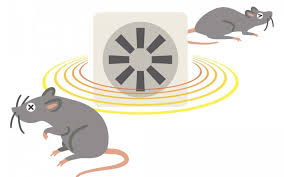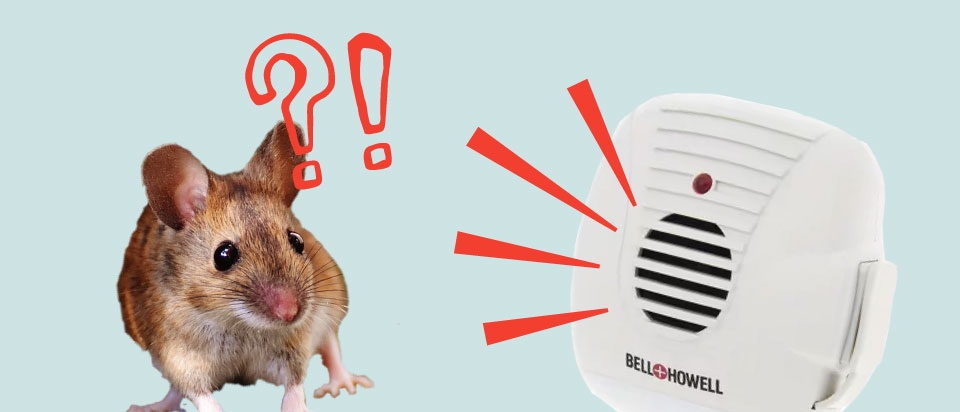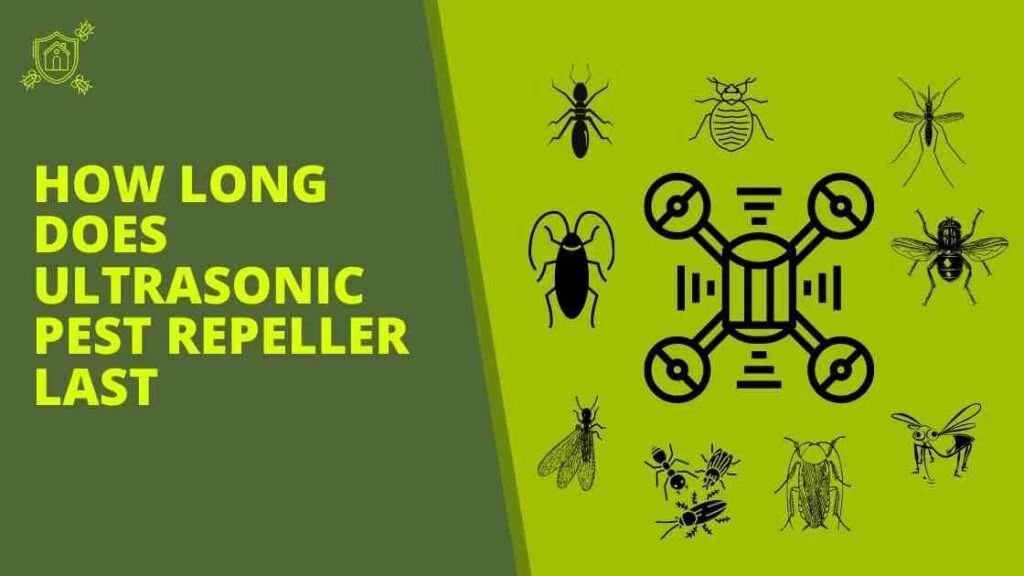
I can't do anything about it -- no matter how much I clean, rats always seem to be running around the house.
When I saw a rat running across my kitchen floor, I couldn't believe my eyes. As I tried to chase it away, my heart was racing, but it just ran to the bottom of the fridge.
I'm at a loss for what to do about this until I saw an ad for
an ultrasonic pest repeller last month. I thought this might be the answer I was looking for.
But when I ordered online, I started to have doubts.
Do ultrasonic pest repellers really work on rats?
I can't stand to waste money on an useless solution. I did some tests and researches to find out, and now none of these nasty rats live in my house.
If you're like me and want to get rid of these pests as soon as possible, keep reading to find out if ultrasonic repellers really work.
How Do Ultrasonic Pest Repellers Work?
In short, ultrasonic pest repellers emit high-frequency sound waves that are designed to repel pests. The theory is that these sound waves create an environment that is uncomfortable for rats and other pests, causing them to leave the area.
The sound waves are typically above the range of human hearing, so they won't be audible to you or your pets.
DID YOU KNOW? The global pest control market was valued at USD 17.5 billion in 2020 and is projected to grow at a compound annual growth rate (CAGR) of 5.4% from 2021 to 2028. This growth can be attributed to rising pest infestations and pest-related health concerns, increasing demand for pest control products, including ultrasonic pest repellers. |
However, there is a lot of controversy surrounding the effectiveness of ultrasonic pest repellers, with some questioning whether they actually work.Can ultrasonic repellers really drive away rats?Stay with me and let's get to the fun part.
Do Ultrasonic Pest Repellers Work on Rats?
Yes, is the short answer.
Let's look at a classic set of controlled experiments:
Introduction:
The study, which was published in the Journal of Vector Ecology, looked at how well ultrasonic devices worked on house rats in the lab.
Purpose:
The goal of the study was to find out if ultrasonic devices could be used to keep rat populations in check.
Procedure:
The study consisted of two groups: a treatment group and a control group. The treatment group was exposed to ultrasonic equipment, while the control group was not. The researchers monitored the number of rat in each group over a period of time to see if there was a difference in population size between the two groups.
Results:
The results of the study showed that the ultrasonic device resulted in a significant decrease in the number of rats in the treated area compared to the control area. This suggests that ultrasonic devices can be an effective tool for controlling rat populations.
However, the study says that the effectiveness of the device depends on things like how far away it is and where the mice are in the treatment area.
Overall, the study suggests that ultrasonic devices can be an effective tool for
controlling mouse populations, but their effectiveness depends on a number of factors. It is important to take these factors into account when using ultrasonic devices for pest control.
There Are More.... A study published in the "International Journal of Pest Management" in 2014 tested an ultrasonic repellent device against house mice in a commercial storage facility. The study found that the ultrasonic repellent device caused a significant reduction in mouse activity and damage to stored goods. |
But other studies have shown that ultrasonic repellent machines don't change how rats act or how many of them there are.
I've read dozens of these test reports and articles and found that the main reason artificial ultrasonic devices don't work on rats is that rats are very adaptable, so they may get used to the sound and stop responding, making the device useless.
Still, it is possible that ultrasonic repellers work on some rats in some cases. For example, if the rats are young and their hearing isn't fully developed yet, or if they have already been bothered by other ways to get rid of pests, an ultrasonic repeller may help.
I need to remind you of something:
It's important to remember that ultrasonic repellers should be used as part of a plan to get rid of rats, not as the only way to do so.
So, if you want to be more effective at repelling rats, you should consider combining ultrasonic repellers with other methods.
Here are four DIY ways you can use ultrasonic repellants to keep rats and other pests away.
4 DIY Methods to Use with an Ultrasonic Pest Repeller
If you're dealing with a rat infestation, there are some DIY methods that work with
ultrasonic repellers.
1. Peppermint oil: Rats are repelled by the smell of peppermint oil. You can soak cotton balls in peppermint oil and place them around areas where rats are entering your home. You can also mix peppermint oil with water in a spray bottle and spray it around the areas where rats are entering your home.
2. Steel wool: Rats can't chew through steel wool, so you can use it to plug up any holes or gaps in your home that mice may be using to enter. Make sure to use gloves when handling steel wool, as it can be sharp.
3. Mothballs: Mothballs have a strong odor that repels rats. You can place mothballs in areas where rats are entering your home, but be careful not to use too many, as the odor can be overwhelming.
4. Keep your home clean: Rats are attracted to food and clutter, so keeping your home clean and tidy can help prevent infestations. Make sure to clean up spills and crumbs, store food in sealed containers, and keep clutter to a minimum.
In conclusion, ultrasonic repellers do work to keep some pests away. But it may work better if you combine it with other things you can do yourself.
Takeaway
In conclusion, ultrasonic repellers do a good job of scaring rats away, but they shouldn't be the only way to get rid of rats. These devices work best when used with other methods, like mothballs, peppermint oil, and good hygiene. By taking an integrated approach, we can make rodent control methods work better and last longer. So, if you have a rat problem, you might want to use an ultrasonic repeller along with other methods for the best results. You can enjoy a pest-free environment and the peace of mind that comes with it with a little work and the right tools.
For a convenient reminder of these effective methods, simply save the image below and have it on hand whenever you need it.










